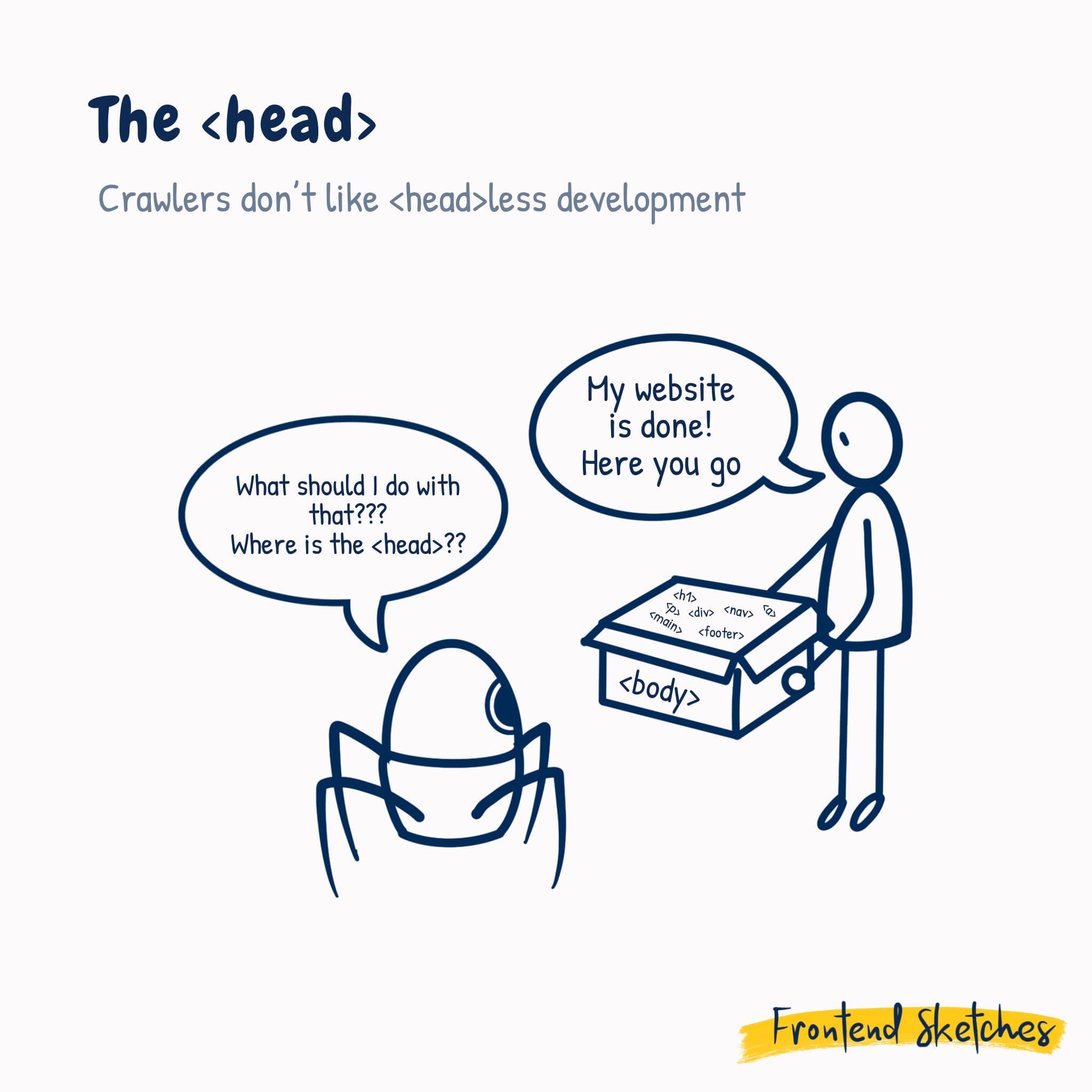
Welcome friends 👋
The first half of the year went by so quickly! This month I want to talk about the <head> element. It's such an invisible part of a website, yet it's quite important and powerful.
If we use the most minimal tags, we need to define our charset, viewport and title within the <head>. But there are so many things you can set in the head, that will influence your SEO and performance. There are actually 8 elements that are valid in the head: meta, link, title, style, script, noscript, and base.
Using correct meta tags is what I refer to as robot-friendly development. We can tell the crawlers to index pages, set translations, look for geotags, allow for web monetization, optimize for social media and many other things.
With the different link tags, we can define authors, licenses, archives, webmentions, feeds and all kinds of resources.
The noscript is useful, when we want to consider everyone who has disabled javascript and allows us for example to load a different css file.
The base element allows you to set a base default url for all links. The nice thing about the base tag is that it enables you to do more complicated URL rewrites with less hassle. But there are some gotchas when using it.
I collected some resoureces to learn more about the <head> element below.
-- Lisi
Links & Tools
htmlhead.dev
Guide
One of the best guides to learn all about the head element.
Open Graph Tags
Collection
A list and descriptions of the open graph tags.
Head it
CLI tool
A CLI tool to quickly get common meta tags for social networks or different devices.
What I worked on this month
In May I updated a lot of the tutorials on Storyblok on Gatsby.js and Next.js. I also continued working on the Storyblok V2 with the product team. At the end of the month I joined a fun lounge session at the Netlify headless commerce summit. Finally, I also started drawing again and enjoyed some sunny days outside hiking ☀️
I recommend

Understanding SEO
An ebook to better understand what SEO is about. After reading it you should be able to use what you have learned to make informed SEO decisions without external consulting.
Enjoyed this issue? Share it:
You just read issue #5 of Frontend Sketches. You can also browse the full archives of this newsletter.